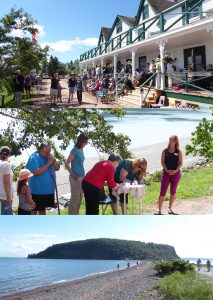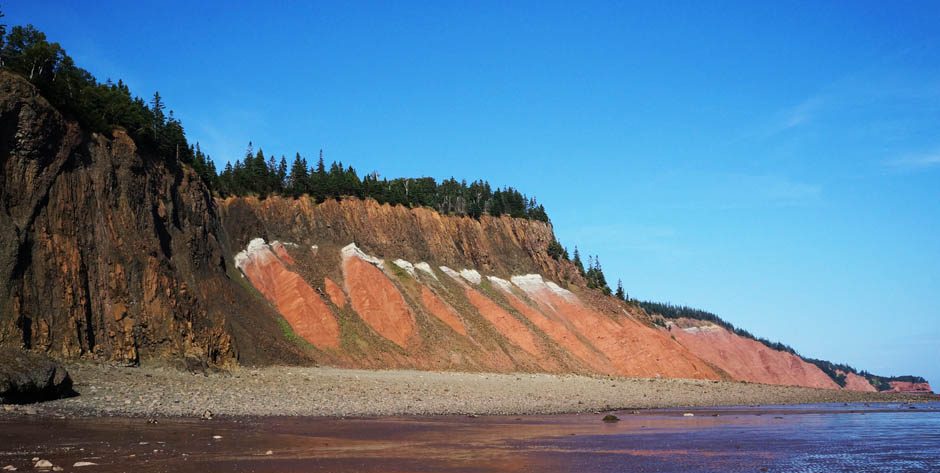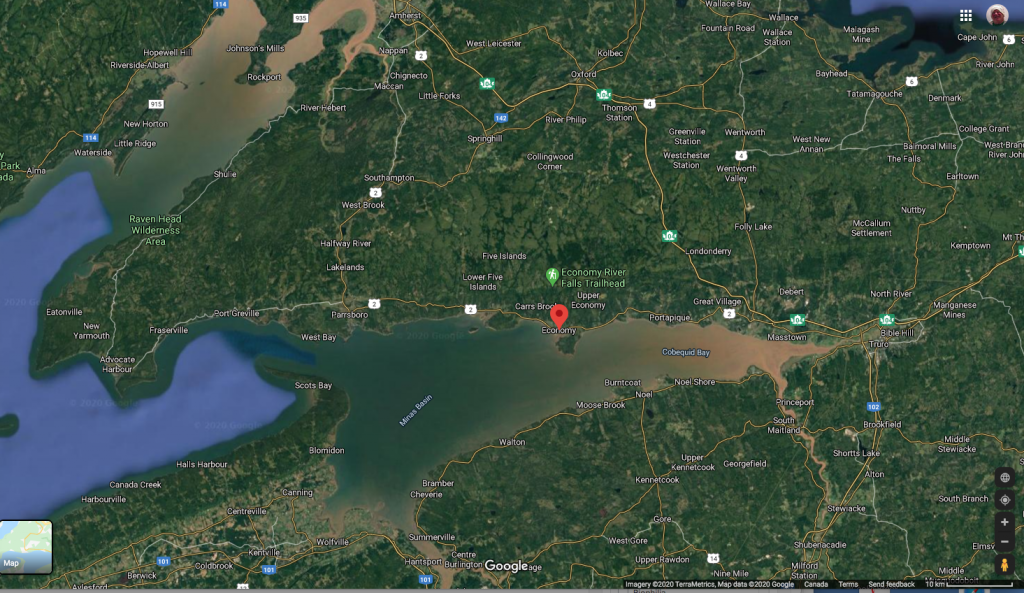
Dedication of Partridge Island, Aug 21, 2016 at Ottawa House, Parrsboro. Partridge Island is a traditional gathering place for the Mi’kmaq. View post
Click on images for larger versions
– It’s official! Cliffs of Fundy, Bonavista Peninsula named UNESCO Global Geoparks
Emma Davie, Emily Chung · CBC News July 10, 2020
———–
There are so many special places in Nova Scotia.
Twenty years ago or so, I fell in love with “The Parrsboro Shore” – my terminology for the area extending from the first glimpse of tidal rivers and marshes as you take the exit from the Trans-Canada at Masstown and head west on the Glooscap Trail going through some wonderful vistas and place names (my favourite: Upper Economy, Economy and Lower Economy) and keep going a very long time, turning away from the coast at Advocate and heading north to return to the coast at Apple River and continue on by the Raven Head Wilderness Area, perhaps hiking down to Birch Cove, then on to Sand River – or backtrack to Eatonville and our magnificent Chignecto Park.
I have returned there every year, usually in late summer or early fall. It conveys so much history, recent and ancient, that of the Indigenous peoples just coming into “our” (the settlers’) consciousness.
There is the feeling of the air, the vastness of the mud flats, the feeling as you stand on a cliff and look along the coast that you are sharing the air and the land with people of a hundred and a thousand years ago.
The ancient history is written everywhere, of “continental drift and plate tectonics, igneous intrusions and volcanic eruptions, changing climates, ancient environments, the development of the plant and animal life, the world’s oldest reptiles and Canada’s earliest dinosaurs, the list goes on…” (Ken Adams, Director/Curator, Fundy Geological Museum, Parrsboro, Nova Scotia, 2006). It also has messages about our future.
It’s been a well kept secret, now it’s out and I am so happy about it. Its designation as a UNESCO Global Geopark affords the peoples who live along the shore new opportunities and will help to ensure that the rest of us, the visitors, see and experience that area in ways that fully respect the lands and the peoples.
UNESCO Global Geoparks are single, unified geographical areas where sites and landscapes of international geological significance are managed with a holistic concept of protection, education and sustainable development. Their bottom-up approach of combining conservation with sustainable development while involving local communities is becoming increasingly popular. At present, there are 147 UNESCO Global Geoparks in 41 countries. – UNESCO
View Cliffs of Fundy set to become UNESCO Global Geopark this month
Emma Davie for CBC News July 1, 2020
“There’s nowhere else on planet Earth where you can see the record of the assembly of a supercontinent 300 million years ago, called Pangea, and its breakup 100 million years later, which was the birth of the modern world,” he [Geologist John Calder] said.
“This is why the [UNESCO] evaluators were so struck — they were awestruck of the fact that we’re on the shores of the world’s highest tides, we have this unrivalled record of the history of the Earth and this incredible story of the Mi’kmaq traditions and sacred culture.”
Happy Canada Day!

I had climate warming in mind when I used this image as a header for this website sometime back. The Exposure at Five Islands Provincial Park records the 4th Mass Extinction (whitish layer), which was associated with environmental impacts of a massive lava flow, recorded in the basalts above it; a skin of today’s forest lies on top (the intervening softer rocks scarped off by glaciations). The 5th Mass extinction – the one that wiped out dinosaurs and facilitated the rise of mammals and finally humans – was associated with an asteroid hitting the Earth 65 million years ago. The 6th is now underway purely at the hands of man; how we manage our forests could help to reduce the damage, or to make it worse.
“Currently, human activities are causing carbon dioxide levels to change more rapidly than volcanoes, asteroids, or anything else in Earth’s 4.5 billion year history.” – Putting it in perspective: Climate change yesterday and today (evolution.berkeley.edu)

